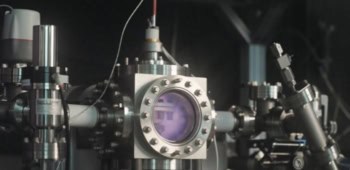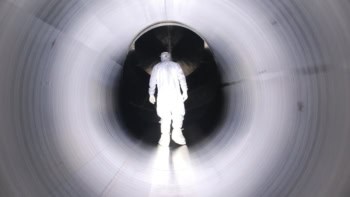An agreement that would allow the Joint European Torus (JET) fusion project to continue for another three years is being threatened by an on-going dispute about staff salaries. JET is the world's leading fusion experiment and will shut down at the end of the year unless all 16 countries in the project sign up. The dispute centres on the fact that UK staff at JET, who are employed by the United Kingdom Atomic Energy Authority (UKAEA), earn less than non-UK staff, who are paid by the European Union. Just under 500 staff work on the project, which is based at Culham in the UK. The EU has set aside Euro 979m for its Euratom fusion programme over the four years to 2002, including some Euro 320m for JET.
Under the terms of the new European Fusion Development Agreement (EFDA), JET would no longer carry out one common programme of work approved by the EU. Instead, the JET facilities would be run by the UKAEA on behalf of Euratom. Visiting teams of researchers from JET’s 16 member states or “associations”, which include the UK, would then do experiments at JET agreed by a peer-review selection panel. A non-UK director would be appointed to lead the experimental work.
The EFDA, which was negotiated by the European Commission and the various associations, came into force at the end of March. It includes an “implementing agreement” to allow JET to continue until 2002, and an “operating contract” to let the UKAEA run the facility. But if all the individual associations and the European Commission do not sign the agreement, JET will have to close. The UKAEA would then have to decommission the facilities and return the Culham site to green fields, as planned when JET was launched in 1979.
Although the UKAEA is confident that the associations will sign, the main stumbling block is the dispute over staff salaries, which has been rumbling on for more than a decade and has now gone to court. “The court case is the last obstacle to agreeing the new arrangement, ” says Martin O’Brien, a fusion programme manager at the UKAEA. “But if there is no significant progress with the court case, some parties say they will not sign.”
Martin Keilhacker, director of JET, agrees: “The court case could be an impediment. If the court case is still dragging on, it’s not clear if all countries will sign.” The European parliament will now negotiate with the various parties to try to resolve the dispute. Keilhacker hopes that an out-of-court settlement can be reached.
One promising sign is that most of the 100 or so Euratom staff at JET will have left the project by the end of the year for other EU posts. Non-UK scientists at JET will in future be employed by their own countries and will only visit JET for short periods. They will not necessarily be earning more than their UK colleagues.
JET was designed as the first step on the path to a commercial fusion reactor. It was meant to be followed by the $10bn International Experimental Fusion Reactor (ITER). But when the US pulled out of ITER last summer after six years of design studies, ITER’s three remaining partners – the EU, Russia and Japan – agreed to concentrate on a smaller and cheaper version of the reactor. Researchers at JET hope to use the extension to look at the science and engineering behind a smaller reactor, where several challenges exist.
Derek Stork, head of neutral-beam heating at JET, welcomes the prospect of a three-year extension. “The JET reactor has a substantial potential for improved performance, and we have a broad and exciting range of experiments that can only be performed on this machine, ” he says. However, Stork admits that JET’s programme could become less coherent without a dedicated project team. “Operating a novel management structure will be a challenge, and there will inevitably be ups and downs.”
Keilhacker sees next year as a transition period, when the individual associations will have to learn to use the JET facilities according to new rules, both technically and organizationally. “In fact, the new arrangement could make Europe’s fusion programme more closely integrated because the individual countries will have to discuss the division of work, ” says Keilhacker.
If an agreement is reached, Keilhacker is confident that JET could even continue beyond 2002. “My personal opinion is that it will carry on for about another two years, assuming, of course, that money is still available.” Keilhacker thinks that an extension would be more likely if a decision on the future of ITER takes longer than expected.



